(CNN) — It’s a sunny afternoon in Moravia, and people are busy weeding the communal gardens on top of El Morro de Moravia (Moravia Hill), which sits at the heart of this working-class Medellín neighborhood.
Others are in the greenhouse, inspecting orchids in myriad tropical shades and rows of bromeliads, whose glossy orange bracts erupt from waxy leaves.
Outside, children fly kites, the flimsy colored plastic shuddering in the gusts that blast and swell, before leaping up into cerulean skies. Around them are families, meeting to chat and enjoy the panoramas of Medellín that this vantage point, 35 meters (115 feet) above the neighborhood, grants.
Concrete steps stamped with words such as “dignity” and “difference” lead up to the hilltop and are bordered by black and white photographs of this tranquil park in its former — and entirely unexpected — incarnation.
Like the rest of the city — which was dubbed the world’s most dangerous by Time magazine in 1988 — it’s unrecognizable. After all, beneath everyone’s feet lies a decade’s worth of rubbish and what was once the municipal landfill.

El Morro landfill formally closed in 1984, and desperate families began to build their houses on top.
Courtesy Medellín.Travel
‘A dark corner of the city where nobody dared to go’
Many found their way to Moravia, an informal neighborhood that once lay on the outskirts of Medellín.
In the 1970s as the city expanded, the local authorities designated Moravia as the site of the new municipal landfill. Existing residents were relocated to distant areas in the west of Medellín; those who remained — dubbing themselves “The Resistance” — faced the realities of living beside a rubbish heap.
Many turned to recycling as a means of etching out an existence. Each day, one hundred tons of waste — about the weight of a Boeing 757-200 — was dumped onto the site.
When the landfill was formally closed in 1984, desperate families — many with young children — began to build their houses on top. Over the next 20 years, the population of El Morro swelled to over 15,000, all living in precariously built shacks constructed from whatever they could scavenge.

The hill was covered over and is now a thriving urban park and garden.
Juan Henao Fotografia/Medellín.Travel
“The first house that I built was made of cardboard, plastic and wooden poles,” explains Elsy Torreglosa Gallego, who arrived in 1986, four kids in tow. Conditions were unsanitary, and the risk of fire constant because of cramped housing constructed from flammable materials and the noxious cloud of toxic gases that bubbled up from the waste.
A more immediate concern, however, was violence.
In the 1980s and 1990s, Medellín was in the grip of a bloody battle between drugs cartels, the most notorious of which was led by Pablo Escobar. In Moravia, rival gangs and armed groups recruited from the ranks of young people.
Moravia quickly became a no-go zone for the rest of the city, with residents facing the stigma of living in such a dangerous place.
“Moravia was a dark corner of the city where nobody dared to go. When we tried to get jobs in other parts of the city, they would say ‘no, because you’re from Moravia’. We had to lie in order to get work,” recalls Gallego.
Flowers bloom from trash
Everything changed in 2004.
Believing that life could be different, community leaders began “knocking on doors: the government’s, organizations, anyone who would be willing to help us solve the needs of the neighborhood,” says Gloria Ospima, who moved to Moravia with her family in 1968 at age 6, and is now one of the area’s more than 100 mostly female community leaders.
These requests were met with action when the government announced the Moravia Integral Improvement plan, which began clearing slums from the rubbish mountain and converting it — in part by covering the garbage heap with dirt — into a 30,000-square-meter urban park.
The government also invested in new community buildings. As part of this strategy, residents living beside El Morro were also allowed to legally purchase their land and homes.
“Those 15 minutes when the mayor told us that they were going to focus on Moravia and support us was life-changing,” recalls Gallego.

Flowers to sell at fairs across the city are grown in the vast greenhouse at the top of El Morro.
Courtesy Medellín.Travel
Nowadays, the neighborhood couldn’t look more different.
Gallego is part of Cojardicom, a collective of women who carefully tend the flower beds that now line the slopes of El Morro, which thrive with colored grasses and more than 70 species of plants. In the vast greenhouse situated at the very top, they also grow flowers to sell at fairs across the city, in one of the most symbolic acts of transformation: making flowers bloom from trash.
Vibrant local life
Back beneath the hill, Moravia thrives, too.
One of the most densely populated neighborhoods in the city, it’s a jumble of concrete and brick dwellings that rise up like upside-down pyramids as every new story is larger than the last, and whose walls are a flush of color from street art that pays homage to revered community leaders who’ve spearheaded Moravia’s metamorphosis.

Murals, such as this one by Jefa, bring flushes of color to many walls in Moravia.
Courtesy Medellín.Travel
Dotted in between are tiny restaurants serving freshly squeezed fruit juices and deep-fried, cheese-filled buñuelos, whose aromas settle into air filled with the buzz of mopeds careering through narrow streets. IA smattering of gift shops has sprung up selling locally handcrafted jewelery and offering much-needed sources of income to residents.
If El Morro is the green lung of the neighborhood, this is its beating heart.
Seventeen paid staff and an army of volunteers offer cultural and educational programs, with everything from ballet to breakdancing and woodwork to weaving, while local artists and theater groups can exhibit and perform their work.
Ana Maria Restrepo, general coordinator at the center, is under no illusions as to the scale of its impact on local people.
“We know that art and culture are platforms that help people to connect, and that connection transforms into a knowledge of the world,” she enthuses. “A different perspective of the world changes everything for people here who historically haven’t had many opportunities.”

Tours offer visitors a chance to explore the area’s transformation.
Courtesy Medellín.Travel
A future that hangs in the balance
But, after over a decade of sustained improvements, a new plan for the neighborhood threatens its existence.
Issued in 2018, the Plan Parcial de Renovación Moravia (Moravia Partial Renovation Plan) proposes converting half of the area into a public park, while a further quarter of current dwellings would be replaced with 20 high-rise apartment blocks — a plan that critics argue will relocate a third of residents and change the social make up of the area.
One such critic is Maximilian Becker, co-founder of architecture collective Oasis Urbano, which, since 2016, has worked with community leaders to empower the neighborhood in an “approach that puts local communities at the heart of the process, bridging the gap between top-down and bottom-up planning,” Becker explains.
These multistory apartments, he argues, will have “no infrastructure, no shopping, no culture, no nothing. It’s the complete opposite of Moravia.”
But the constant threat of relocation isn’t the only disabling force residents must face.
Over the past few months, an estimated 1,000 new shanty dwellings have sprung up once more on El Morro, with community leaders blaming a wave of Venezuelan refugees and government inaction.
The future of the project now hangs in the balance.
“We’ve had a setback of more or less 20 years,” Gallegos argues, reflecting the palpable anger from residents and community leaders, who see the government as having failed in their duty to prevent families from repopulating the hill.

A view from the top of El Morro looks across Rio Medellín and the tram station.
Courtesy Medellín.Travel
Overcoming stigma and having a voice
New projects continue despite this uncertainty.
Oasis Urbano and community leaders are working to construct Taller Tropical 2.0, the second version of a bamboo-built open-air workshop that hosted 10,000 people for cooking classes, concerts, workshops and more over three years, but was deconstructed earlier this year when the lease ran out.
Using crowdfunding, they plan to rebuild and expand the building to become a four-floor community hub, encompassing a cooking school, restaurant and community kitchen, workshop spaces and a library.
Following the election of a new mayor in 2019, residents are also optimistic that there is less of an appetite to enact the controversial relocation plans. Instead, there’s hope that conversations between government and local people can encourage a rethink, allowing the community who have fought so hard for Moravia to be given a voice, too.
If tourists continue to visit and hear the neighborhood’s remarkable story of hope, community strength and transformation, it may also help ensure the longevity of the changes.
Overcoming the stigmas that residents still face from other Colombians who, unlike international tourists, remain fearful of entering the neighborhood is an essential part of this.
“Moravia was a place nobody wanted to come to. There was violence, it smelled bad and there were lots of mosquitoes,” Ospima explains.
“But today, people from other countries come and are interested in hearing and knowing our history. This shows what we have achieved in this neighborhood, and our capacity to improve and transform.”

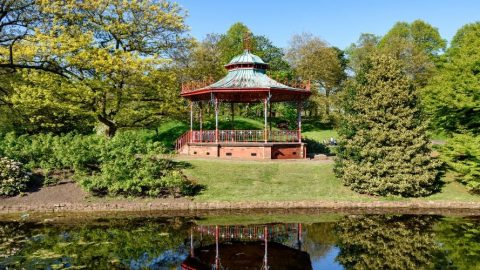

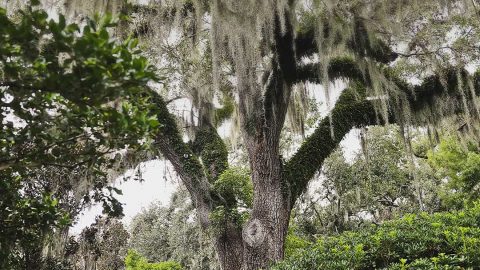
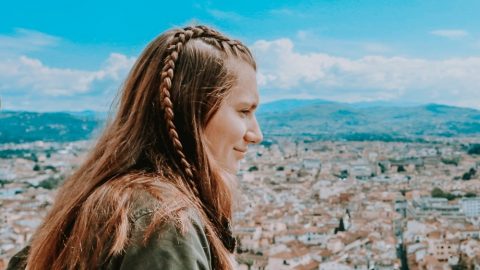
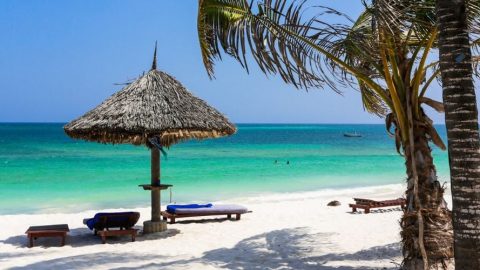
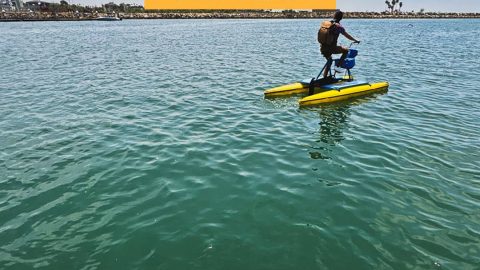
Recent Comments